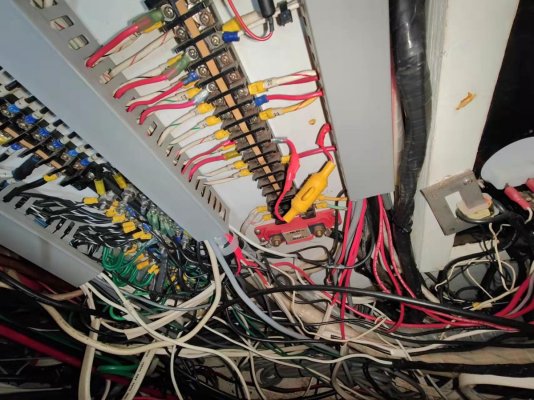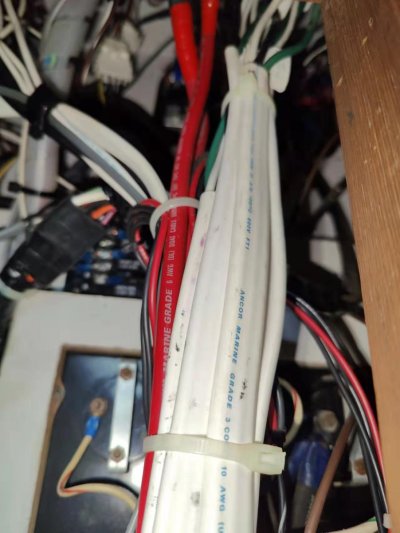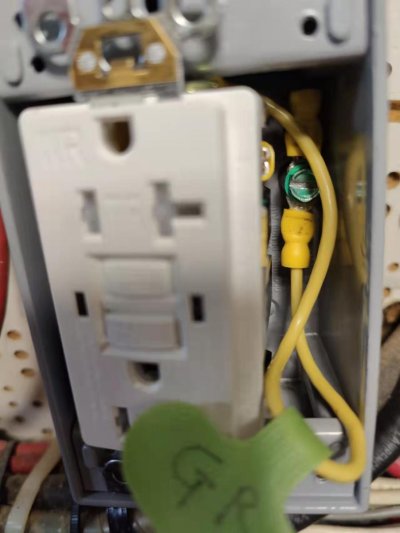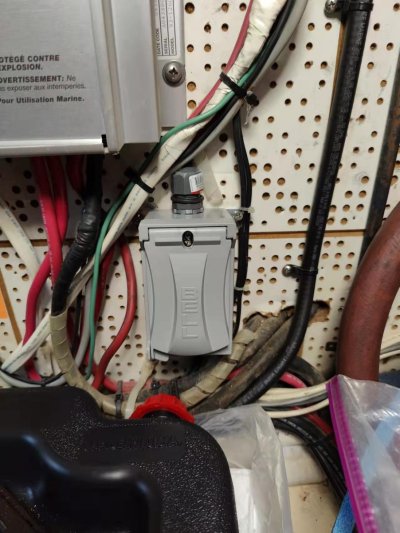paulga
Guru
- Joined
- May 28, 2018
- Messages
- 988
- Location
- United States
- Vessel Name
- DD
- Vessel Make
- Marine Trader Sundeck 40'
Thanks.
since the grounding wire is not critical, I would use that 12g yellow wire as the new grounding wire, keeping other terminals unchanged.
since the grounding wire is not critical, I would use that 12g yellow wire as the new grounding wire, keeping other terminals unchanged.
Yes, there is spiral loom on the visible wires. It could be such that inside the wall and along the rest of the wire's route, there exists the factory outer jacket that groups these 3 wires together. This type of outer jacketed wire is commonly used as it speeds up installation.
The individual wire's size and temp rating should be marked on this outer jacket and/or the individual wires. You just need to find the markings!
Without a doubt, the gauge and temp. rating matter!
Inside the metal box, the new grounding wire from box to the GFCI should be the size of the supply conductors, although if this was a terrestrial based installation the wire can be one size smaller and even uninsulated.
I don't know if ABYC allows those two things, as it's just easier to use the same green wire.




